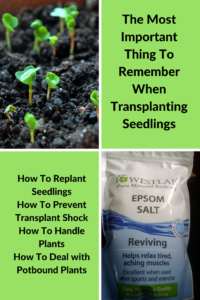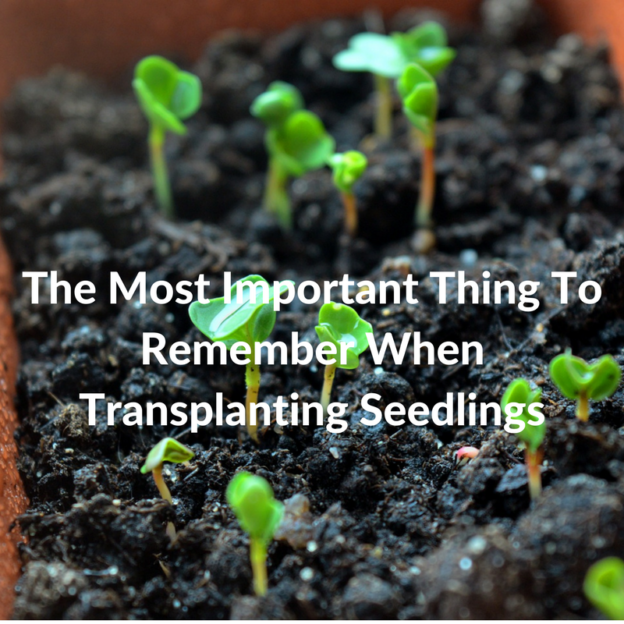There are many things that need to be taken into account when transplanting or repotting seedlings. However the most important thing to remember when transplanting seedlings will give your plants the very best start in life.
Things To Remember When Transplanting Seedlings
Once the seeds have germinated and they are growing strong, it’s easy to believe that the job’s done and that healthy plants are guaranteed. Apart from the obvious factors like temperature, moisture, humidity, hardening off, and light, there are other points to be aware of. Things like:-
- Which parts of the seedlings are delicate and easily damaged
- How to handle seedlings
- Which soil types to use
- How to repot established plants
- Where to place seedlings after repotting
So before we get to the most important thing to remember when transplanting seedlings here are a few points to consider.
Which Parts Of The Seedlings Are Delicate And Easily Damaged?
The short answer to this question is every part of a seedling is delicate and should be handled with care and as infrequently as possible. Remember that seedlings are basically baby plants. Just as baby humans and animals are more vulnerable when young so are seedlings.
How To Handle Seedlings
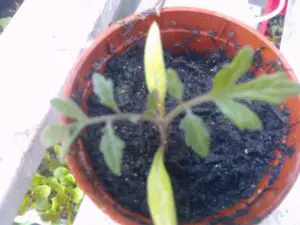
Cotyledons clearly shown in yellow
A gentle touch is needed when handling seedlings and you need to avoid damaging the roots, stem or leaves of plants when transplanting them. Once the seed has germinated it produces cotyledons – seedling leaves. These are different to the actual recognisable leaves associated with each particular plant.
The first two leaves that appear are handy for us gardeners, wait until two proper leaves form and then only handle the plant by the original seedling leaves (cotyledons). The plant will discard these “seedling leaves” so it is not so important if they get damaged when handling.
Try not to touch the true leaves or the plant roots or stem as these are all very delicate and will damage very easily.
Which Soil Types To Use
The soil type you use to repot your seedlings / plants is a personal choice apart from the obvious restrictions if the plant is grown in ericacious soil or not. I personally like to mix my own compost which comprises of roughly:-
- 40% garden compost
- 40% top soil
- 15% vermiculite
- 3% garden lime
- 2% epsom salts
How To Repot Established Plants
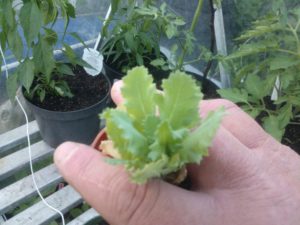
As they grow, plants get bigger and eventually outgrow their pots. This is easy enough to see just by lifting the pot up and looking for roots protruding through the drainage holes in the bottom of the pot.
To repot, get a larger pot and place soil in bottom of pot. Place plant still in pot in new pot to see if level will be correct, add more soil below as needed.
To remove the old pot place your hand on top of the soil with fingers outstretched and slot the stem gently between fingers, squeeze sides of pot and gently tap bottom of pot to release the root ball ( repeat if root ball does not move) DON’T PULL PLANT OUT BY STEM OR LEAVES. Place root ball in centre of new pot and fill with compost until level is attained.
Gently tap pot on to potting table to level the soil and then water thouroughly. Plants need a good soaking once repotted to encourage the roots to start to spead into their new pot.
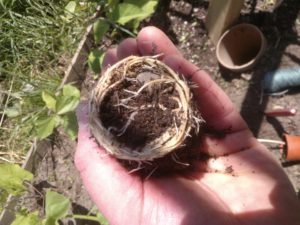
pot bound root ball
If the root ball was really compacted around the base of the old pot (pot bound) gently tease out the circular roots very gently to encourage them to spread.
Where To Place Seedlings After Repotting
Once you have repotted your plant, watered it in and allowed it to drain, place in a slightly shady position to allow it to settle without too much added stress from wind or sun damage.
The Most Important Thing To Remember When Transplanting Seedlings
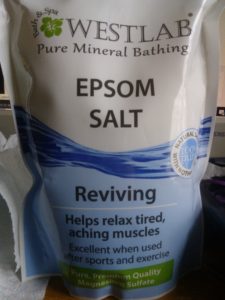
The most important thing to remember when transplanting any plant is to add Epsom Salts to the can when watering them in. Mixed at a ratio of two tablespoons per gallon of water. This will protect your plants from transplant shock and give you a much higher success rate than just planting alone.
What Is Transplant Shock?
Transplant shock is the reason that many plants die after being successfully germinated and grown on to the point of repotting and then suddenly, they die. The plants can’t handle the stress of being moved. Let’s face it they weren’t designed to be moved, if the conditions are right seeds grow… They don’t get moved at a later date.
So we need to help the seedlings by :-
- Treating them gently
- Keeping them at an amiable temperature
- Giving them adequate water, light and nutrients
- Using the right soil type
- Adding Epsom Salts to their water to avoid transplant shock
I cannot stress enough just how much difference Epsom Salts makes to the growth of my plants, I have literally brought plants back from the brink of death it really is amazing.
